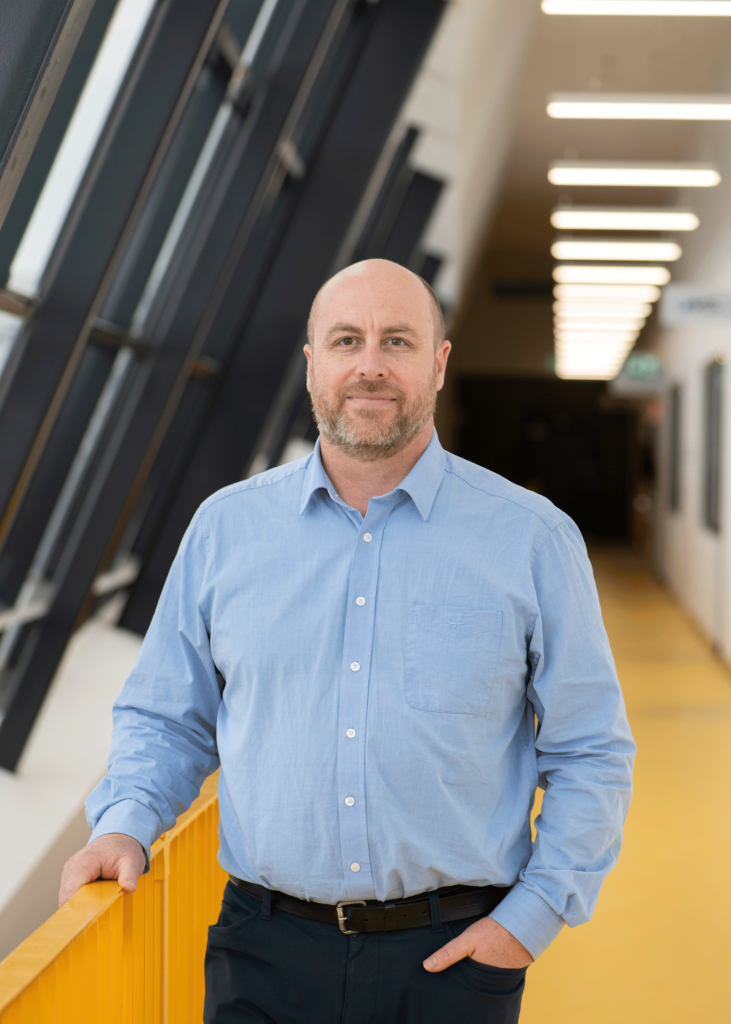“We’re talking about a new enabling technology being applied to an industry that’s been around since the dawn of the Industrial Revolution,” explains Michael Fuller, CEO at Conflux, a company using additive manufacturing to disrupt the $16.6 billion heat exchanger market.
According to Fuller, heat exchangers have been “on a divergent innovation curve for some time.” In the past fifteen years, microtube-based technology, “basically a hypodermic needle multiplied out by many tens of thousands” with very thin walls and assembled into large arrays to construct “very powerful heat transfer devices.” But the microtube method does have limitations, specifically the necessity for straight lines and the difficulty of automating the assembly process – resulting in high costs. In aerospace and motorsport, where cost sensitivity can be lower, “they are the benchmark.”
When placed toe-to-toe in “Formula One style boundary conditions for charge air cooler” against micro tube technology, Conflux’s AM-backed solution held its ground; in fact, each tech “hit the maximum heat transfer that’s possible.” The results? “About 100% of effectiveness, which means the outlet of the hot air is about the same temperature of the inlet of the coolant,” a better result would be “a physical impossibility.” While effectiveness was optimal for both the Conflux AM and the microtube tech, the former required “30% less restriction to the flow or pressure drop on both fluid domains.” Furthermore, Conflux’s heat exchanger was 30% lighter when no coolant was in the device, 40% lighter when filled, and achieved a 15% reduction in volume. These impressive stats also come with “reasonable intel to believe that we’re definitely now at a cost comparable position.”
Essentially, heat needs to either go into or out of a system. “You’ve got three legs of a stool. One of them being heat transferred, the other being pressure drop, and the third being weight,” says Fuller. Disappointingly, but expectedly “AM doesn’t allow us to break the rules of physics.” Any given amount of heat transfer requires a known amount of surface area. The greater the surface area, the greater the pressure drop, “that’s giving more restriction to the flow.” AM allows for “three-dimensional surface geometries and trying to extract more heat transfer per square unit area.”
And with such gains, possibly it’s reasonable to agree with Fuller’s proclamation, “we’re absolutely in the business of energy efficiency.”

The road to additive manufacturing
Fuller has a solid background in motorsport, including Formula One, the World Rally Championship, and Le Mans – “it’s super magical.” He’s worked with the Ford World Rally Team, BMW, Cytec, and concluding that phase of his career with Mercedes F1.
Microwaves, Penicillin and Corn Flakes – some of the most revolutionary scientific or tech breakthroughs come about through fortuitous accidents. In Fuller’s case, the accident was far from figurative. A broken leg and ankle left him unable to travel, “I was holed up for ten weeks and then got designing an AM specific heat exchanger.” Working in high-level motorsport provided early exposure to additive manufacturing and “plenty of heat transfer issues to solve over my career.” With the germ of an idea, he did a “deep dive into how to start up a business.”
The lightbulb moment was “around the fundamental opportunity that AM presented.” A heat exchanger’s performance is “ heavily dependent on geometry.” While additive manufacturing does give you increased design freedom, there are still limitations, but these are “newer limitations .. so there are new opportunities”. The designs Fuller created came with challenges, how to build and also how to model – understatedly, as the CEO puts it, “it was pretty key to find out whether we could build some of these structures, some of the designs that I had. Modelling them in 3D was another thing that also hadn’t really been done.”
Grand designs are one thing, but what about bringing them to market? A business model is critical.
“We’ve actually done so far we’ve done everything we said we would, just not when we said we would,” says Fuller dryly. Conflux has a three-phase plan, first, “prove out the technology.” To support the costs of hiring a team to do such product development, Conflux launched with a service business model – straightforward enough.
Just as phase one was underway, along came the pandemic – putting a stop to the business travel required to generate customers from North America, Europe, and Asia. “We weren’t able to get face to face with customers, which made it very difficult to continue that service business model. As it turns out, people buy from people.”
Faced with travel restrictions, Conflux pivoted or instead made “an accelerated run towards phase two of the business, which is more configurable products.” This took Conflux to a Series A funding round, announced in October 2021. The results are a series of product families were soft-launched during Formnext 2021 – with the broader launch throughout 2022.

How did AM Ventures get involved?
In 2016, AM Ventures sought the company out when it was in an early phase, “at that point in time, we weren’t mature enough to have our ducks in a row to raise seed capital.” Twelve months later, after bootstrapping the company and with sufficient “rudimentary technology” to demonstrate the potential, Conflux closed a seeding round with AM Ventures in July 2017.
For Fuller, it’s essential to have “patient smart money” in the room. “We needed investors that understood the challenges that were ahead of us even better than we did.” AM Ventures provides not only this smart money but can also communicate at the board level to investors in subsequent funding rounds in a way that other VC firms may struggle with.
“Reducing energy consumption and increasing efficiency will be key to combat climate change,” says Philip Schultheiss, Senior Associate, AM Ventures, who are backing Conflux. “Michael and his team design the next generation of heat exchangers utilizing additive manufacturing to tackle this challenging task. Their unique know-how regarding heat transfer and AM in combination with their great team spirit convinced us that Conflux would be an excellent addition to our portfolio,” adds the VC.
Customers tend to have two “ingredients,” a curiosity about Additive Manufacturing and a Heat Transfer problem. As customer conversations have progressed from R&D to procurement, the focus of the discussion has shifted, for higher volume orders “They don’t mind the standard shape, just having the inlets and the outlets where they want them as long as the performance is there and the price is right.”
These customers come from across the globe, and typically fall into one of six industry verticles – Aerospace (including space), Defence, Automotive (general, high-end, and motorsport), Industrial, Micro-electronics, and Energy. Given the stature of some of the customers, the names will be familiar to anyone with passing interest in the respective sectors.
The industrialization of additive manufacturing
Conflux uses laser powder bed fusion to 3D print metal. “The other technologies aren’t actually suitable for the sort of heat exchangers that we create,” he says.
A considerable amount of R&D has gone into making the Conflux designs work, “You can’t build with a standard machine. It’s not plug-and-play,” explains Fuller, “We develop parameters for every design that we create.” Fuller says his team of scientists and engineers means, “our ability to solve the proper technical problems is second to none.”
But a serious challenge does remain – the current price of additive manufacturing systems that dominates any discussion of cost. Conflux has made throughput gains via technical expertise, yet Fuller believes machine price is the “main thing that’s holding back the industrialization of [AM] production.” Market forces may yet solve this challenge, “Chinese machine manufacturers will be coming in with much lower price points and if they can get their quality right, which I’m sure they will over time, then this will box the noses of the Germans and the Brits into producing machines cheaper and selling machines cheaper,” forecasts Fuller. And what is Fuller’s take on the seemingly perennial topic of industrialization? Higher productivity and lower systems costs are critical if industrialization is to occur.
What’s next?
What’s next for Conflux? Fullers says, “We’ve gone from application development, commercial laboratory type business, where we do a lot of services and design and prototyping and in low volume series production to increasing our production capacity. We’ll get a new production-oriented platform in the EOS M300.” Audits for AS 9100 certification are approaching, adding to the current ISO 9001 certification. Plus a product digitization roadmap is advancing.
“Looking ahead, we see that Conflux’ heat exchangers will be widely adopted in general industry, aerospace and automotive, wherever highest performance and excellent efficiency is required,” says AM Ventures’ Philip Schultheiss.
Subscribe to the 3D Printing Industry newsletter for the latest news in additive manufacturing. You can also stay connected by following us on Twitter and liking us on Facebook.
Looking for a career in additive manufacturing? Visit 3D Printing Jobs for a selection of roles in the industry.
Subscribe to our YouTube channel for the latest 3D printing video shorts, reviews, and webinar replays.
Featured image shows 3D printed heat exchangers. Photo via Conflux.


